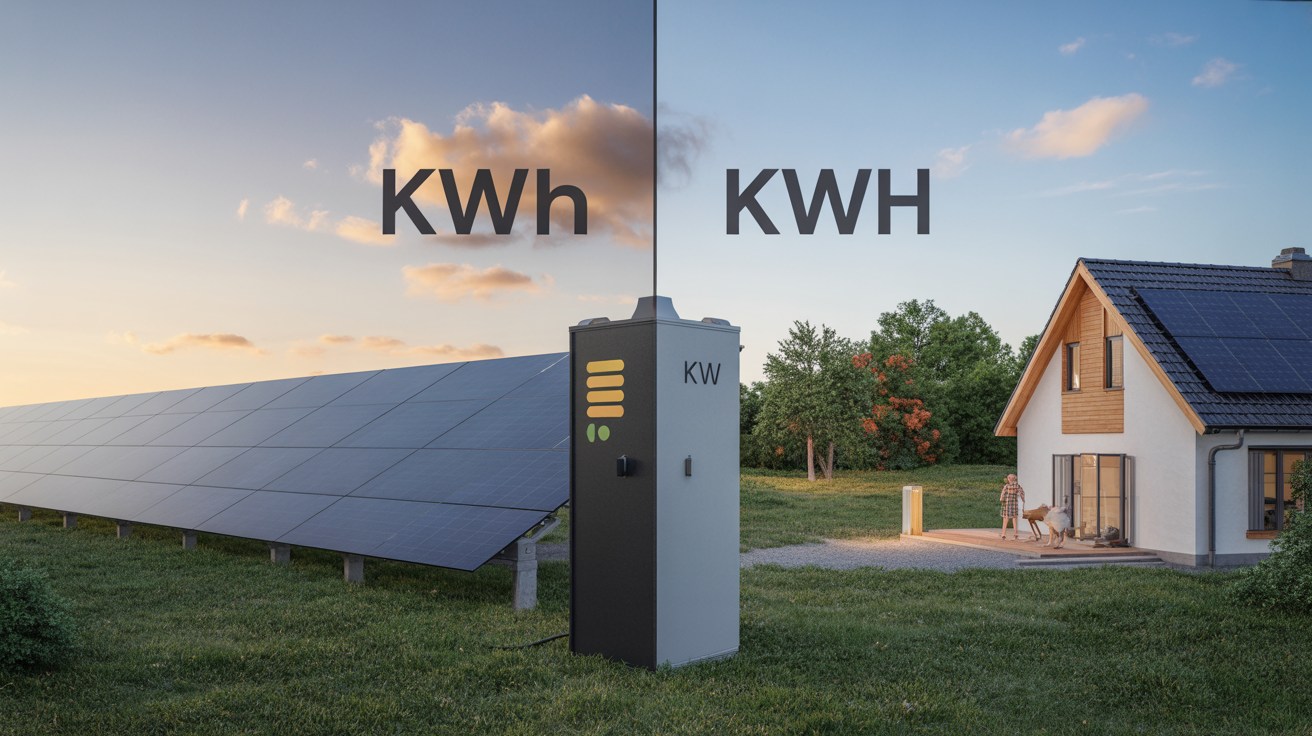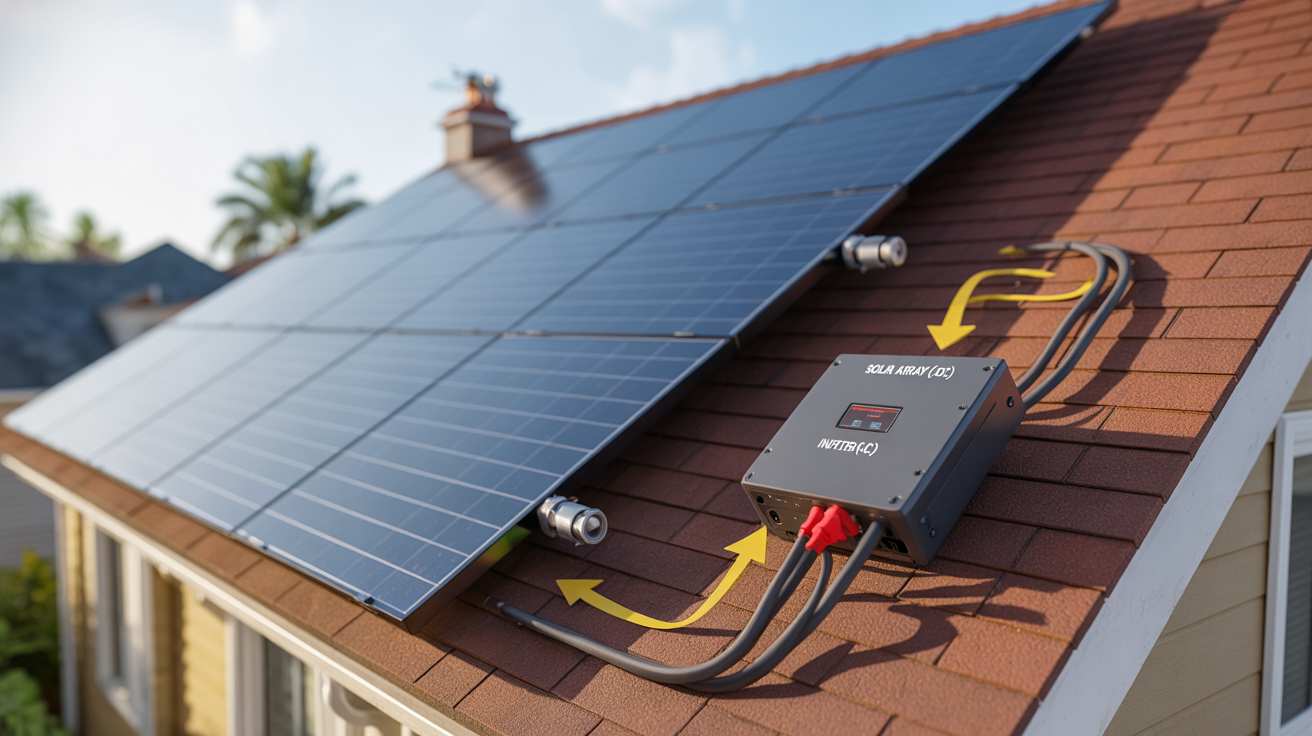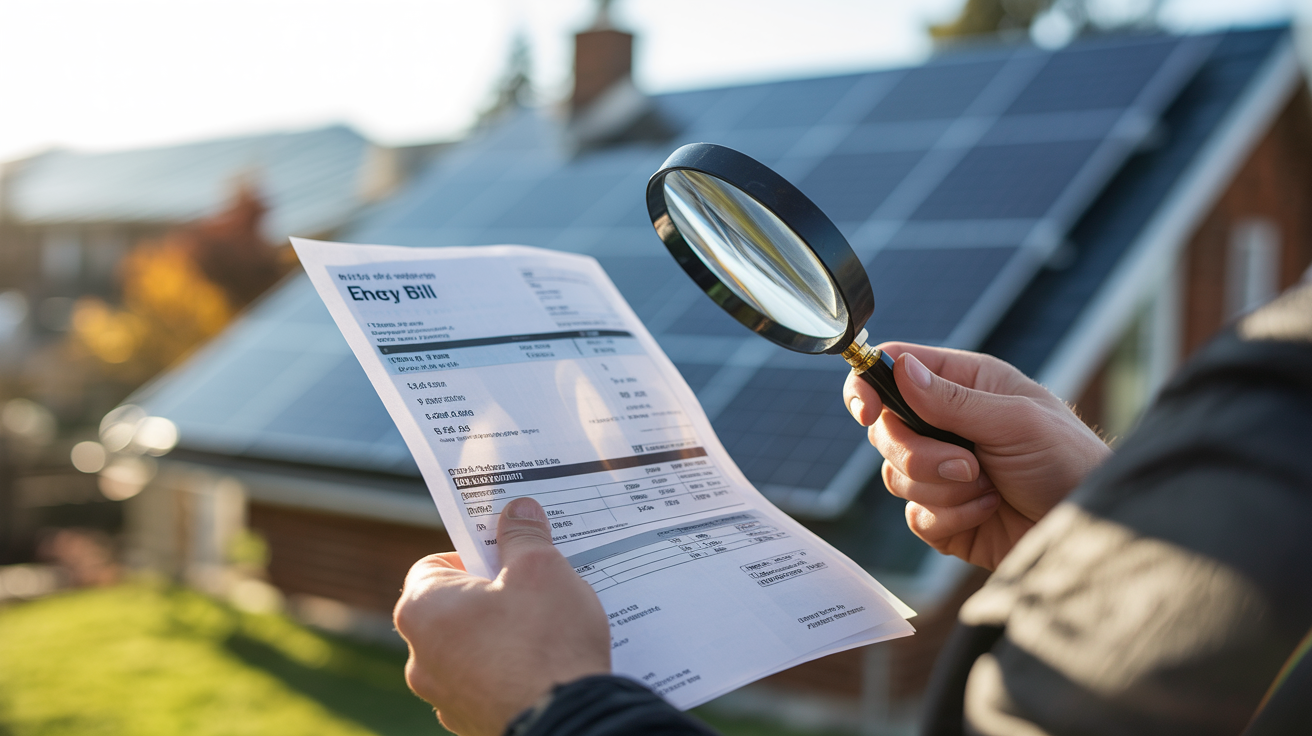Embarking on a solar energy journey for your home or business brings many new terms and concepts. Among the most fundamental are kilowatts (kW) and kilowatt-hours (kWh). Understanding these units is essential for accurately sizing your solar system, managing your energy consumption, and achieving true energy independence. This guide will clarify the distinction between kW and kWh and provide practical steps for choosing the right solar solution for your needs.

Understanding the Basics: Power (kW) vs. Energy (kWh)
The terms kilowatt (kW) and kilowatt-hour (kWh) often cause confusion, yet they describe distinct aspects of electricity. Grasping their definitions is the first step toward effective solar system planning.
What is a Kilowatt (kW)?
A kilowatt (kW) is a unit of power. It measures the rate at which electricity is used or produced at a specific moment. Think of kW as the "speed" at which electricity flows or is generated. One kilowatt equals 1,000 watts.
For solar panels, kW denotes the system's power capacity or its maximum output under ideal conditions. For example, a 5 kW solar system can produce up to 5 kilowatts of power when the sun is brightest.
What is a Kilowatt-hour (kWh)?
A kilowatt-hour (kWh) is a unit of energy. It measures the total amount of electricity consumed or produced over a period. If kW is like speed, then kWh is like the distance traveled.
Your electricity bill primarily uses kWh to measure your energy consumption. If you use a 1 kW appliance for one hour, you have consumed 1 kWh of energy. A 100-watt light bulb would need 10 hours to consume 1 kWh.
Why the Distinction Matters for Solar
Understanding the difference between kW and kWh is crucial for accurate solar system sizing. The kW rating tells you the potential size and capacity of your solar energy system. The kWh measurement, conversely, indicates how much energy your system will produce over time and how much energy your home consumes, which is vital for calculating energy savings.
Misusing these terms can lead to incorrect system quotes. For instance, requesting a solar system based on "12 kW" when you need one that covers "12 kWh per day" could result in an oversized and unnecessarily expensive setup.
Assessing Your Energy Needs: The kWh Factor
The first step in sizing a solar system involves accurately determining your household's energy consumption. This assessment focuses on your kilowatt-hour (kWh) usage.
Analyzing Your Electricity Bills
Your past electricity bills are the best resource for understanding your energy habits. Most electric bills clearly list the number of kWh used each month. Collect your bills from the past 12 months to get a comprehensive view of your usage patterns.
Adding up the kWh usage from the last 12 months and dividing by 12 provides your average monthly consumption. For instance, if your household used 11,400 kWh over a year, your average monthly usage would be 950 kWh. The average American household, for example, uses about 855 kWh per month, or roughly 28 kWh per day.
Estimating Daily and Monthly Consumption
Once you have your average monthly kWh, divide it by 30 to estimate your average daily consumption. This daily figure is critical for matching your solar system's output to your needs.
For example, a typical Australian home uses 15-20 kWh per day, but this varies based on factors such as the number of occupants. A single-person home might use 8-12 kWh daily, while a five-person household with a pool could consume 30-40 kWh per day.
Factors Influencing Your Energy Usage
Many factors influence your home's electricity consumption. These include the number of occupants, home size, the local climate (impacting heating and cooling needs), appliance types, and overall energy efficiency. Your usage can also vary significantly between seasons and different times of the day.
Consider the typical power ratings of common household appliances:
| Appliance | Typical Power Rating (kW) | Estimated kWh/hour of use |
|---|---|---|
| Fridge-freezer | 0.3 – 0.8 kW | 0.3 – 0.8 kWh |
| Washing machine | 0.5 – 3 kW | 0.5 – 3 kWh |
| Electric kettle | 2 – 3 kW | 2 – 3 kWh |
| LED TV | 0.03 – 0.05 kW | 0.03 – 0.05 kWh |
| Air fryer | 1 – 1.8 kW | 1 – 1.8 kWh |
To calculate an appliance's energy consumption in kWh, multiply its power rating by the hours it is used. For instance, if you operate a 2 kW oven for one hour, it will consume 2 kWh of electricity.
Sizing Your Solar System: The kW Capacity
Once you have a clear picture of your energy consumption (kWh), you can determine the appropriate kilowatt (kW) capacity for your solar system.
Matching Solar Output to Your Needs
The goal is to install a solar system with a kW capacity that can generate enough kWh to meet your daily or monthly energy demands. A system's kW rating represents its potential, while the anticipated kWh it should produce annually offers a realistic picture.
For each kW of solar panels, you can expect about 4 kWh per day of electricity generation, though this is a general rule and actual output varies.
Accounting for Sunlight Hours and System Efficiency
Several factors influence the actual energy produced by your solar panels, including sunlight intensity, the number of peak sun hours in your location, panel orientation, temperature, and shading. For example, areas with more sunlight hours generally require fewer panels to meet the same energy demand.
According to the IEA, 20 m2 PV systems in a sunny region receiving at least 1,200 kWh/m2/year of global irradiance can produce enough electricity to meet the specific needs of a family of two to three people for a year. Solar Energy Perspectives
To estimate daily solar energy production, multiply your solar panel capacity (in kilowatts) by the peak sunlight hours in your location. You should also factor in system efficiency losses, which can occur due to temperature, wiring, and inverter performance.
The Role of Solar Inverters
Solar inverters are a crucial component of any photovoltaic system. They convert the direct current (DC) electricity generated by solar panels into alternating current (AC) electricity, which is the standard form used in homes and businesses and by the electrical grid.
Inverters also monitor the system and can provide communication with computer networks. For example, hybrid inverters can manage the charging and discharging of batteries, efficiently directing power where it is needed.
Enhancing Energy Independence with Storage: Batteries and ESS
Solar energy systems become even more robust and reliable when paired with energy storage solutions.
Bridging the Gap: Why Energy Storage is Crucial
Solar panels produce electricity when the sun shines, but your energy needs extend beyond daylight hours. Energy storage systems, primarily batteries, store excess solar energy generated during the day for use at night, during cloudy periods, or during power outages.
This capability enhances self-consumption, reducing your reliance on the grid and offering protection from fluctuating electricity prices. For remote locations or areas with unreliable grid access, off-grid solar solutions with battery storage offer continuous power supply and unparalleled energy independence.
Lithium-ion Batteries: A Reliable Choice
Lithium-ion batteries, particularly Lithium Iron Phosphate (LiFePO4) batteries, are a popular choice for solar storage due to their performance and safety features. Our company specializes in manufacturing high-performance, safe, and reliable LiFePO4 batteries.
LiFePO4 batteries offer several advantages for solar applications:
- High Energy Density: They can store more energy in a smaller volume or weight compared to other battery types.
- Long Lifespan: LiFePO4 batteries typically have a longer cycle life, meaning they can be charged and discharged many more times.
- Safety and Reliability: These batteries are known for their stable chemistry, posing minimal fire risk and being less prone to thermal runaway issues.
- Low Maintenance: LiFePO4 batteries require very little maintenance.
- Faster Charging: They can charge significantly faster than other battery chemistries.
The battery capacity required is determined by the total energy needed to operate your connected loads, the battery’s efficiency, and the desired days of autonomy. IRENA
Integrated Home Energy Storage Systems
Integrated energy storage systems (ESS) combine solar panels, energy storage batteries, and hybrid inverters into one cohesive unit. These systems simplify installation and optimize energy flow, allowing you to generate, store, and utilize energy efficiently.
Our integrated ESS solutions consolidate lithium batteries, hybrid inverters, and solar panels to provide a seamless, reliable, and scalable energy solution. This integration ensures you maximize solar self-consumption, reduce electricity bills, and maintain power during grid outages.
Practical Steps for Optimal Solar Sizing
Properly sizing your solar system is a critical investment. Here are practical steps to ensure you make an informed decision.
Site Assessment and Professional Consultation
Begin with a thorough site assessment. Evaluate the sunlight conditions at your location, considering factors such as panel orientation, tilt angle, and potential shading from trees or buildings. A professional can help identify the optimal placement for your solar panels to maximize energy production.
Engaging with solar energy experts is highly recommended. They can analyze your specific energy usage patterns, assess your property's solar potential, and provide a tailored system design. This ensures your solar system is appropriately sized to meet your current and future energy needs.
Future-Proofing Your Solar Investment
When planning your solar system, consider your future energy requirements. Will your household expand? Do you plan to acquire an electric vehicle or add energy-intensive appliances? Anticipating these changes helps you size a system that remains effective for many years.
While the initial investment in an off-grid solar system can appear substantial, the long-term financial benefits are considerable. By generating your own electricity, you reduce or eliminate monthly utility bills. As electricity prices continue to rise, the savings achieved with off-grid solar systems become increasingly significant.
Achieving Energy Independence
Understanding the difference between kilowatts (kW) and kilowatt-hours (kWh) forms the bedrock of choosing the right solar system for your energy independence goals. kW defines the power capacity of your system, while kWh measures the total energy it produces and your home consumes. By accurately assessing your energy needs and selecting a system with appropriate kW capacity and kWh storage, you can achieve substantial savings and a reliable power supply.
With years of experience in the solar industry, our company is dedicated to providing reliable and scalable energy solutions. We focus on advanced lithium battery manufacturing, integrated energy storage systems, and comprehensive off-grid solar solutions, all designed to empower you with control over your energy future. Take the first step toward a more sustainable and independent energy lifestyle.





Leave a comment
All comments are moderated before being published.
This site is protected by hCaptcha and the hCaptcha Privacy Policy and Terms of Service apply.